
Hendrick van Anthonissen (29 May 1605 - 12 November 1656) was a Dutch marine painter.

Hendrick van Anthonissen (29 May 1605 - 12 November 1656) was a Dutch marine painter.
Van Anthonissen was born and died in Amsterdam. He was the son of Aert Anthonisz (a.k.a. Aart van Antum) and painted in the style of his brother-in-law and teacher Jan Porcellis and of Jan van Goyen. He is the author of sea paintings in the Hermitage, St. Petersburg and the Prague Gallery, which through their signatures have been ascribed to a mythical Hendrik van Antem. In the 1630s he lived in The Hague, Leiden, and Leiderdorp, but from 1642 he was back in Amsterdam. He is known for beach scenes and seascapes in the manner of Jan Porcellis, sometimes in grisaille. He was the father of the marine painter Arnoldus van Anthonissen.
In 2014 one of Anthonissen's paintings View of Scheveningen Sands, which was painted in 1641, underwent conservation at the Fitzwilliam Museum in Cambridge. Restoration work uncovered a beached whale in the picture which had been obscured before 1873, when it was donated to the museum. [1] [2]

Jan Josephszoon van Goyen was a Dutch landscape painter. Van Goyen was an extremely prolific artist; approximately twelve hundred paintings and more than one thousand drawings by him are known.

Frans Hals the Elder was a Dutch Golden Age painter, normally of portraits, who lived and worked in Haarlem.

Adriaen van de Velde, was a Dutch animal and landscape painter, son of Willem van de Velde the Elder and brother of Willem van de Velde the Younger, the marine painter.

Johan Barthold Jongkind was a Dutch painter and printmaker. He painted marine landscapes in a free manner and is regarded as a forerunner of Impressionism.

The Hague School is a group of artists who lived and worked in The Hague between 1860 and 1890. Their work was heavily influenced by the realist painters of the French Barbizon school. The painters of the Hague school generally made use of relatively somber colors, which is why the Hague School is sometimes called the Gray School.

Simon de Vlieger was a Dutch painter, draughtsman and designer of tapestries, etchings, stained glass windows. While he is mainly known for his marine paintings he also painted beach scenes, landscapes and genre scenes.
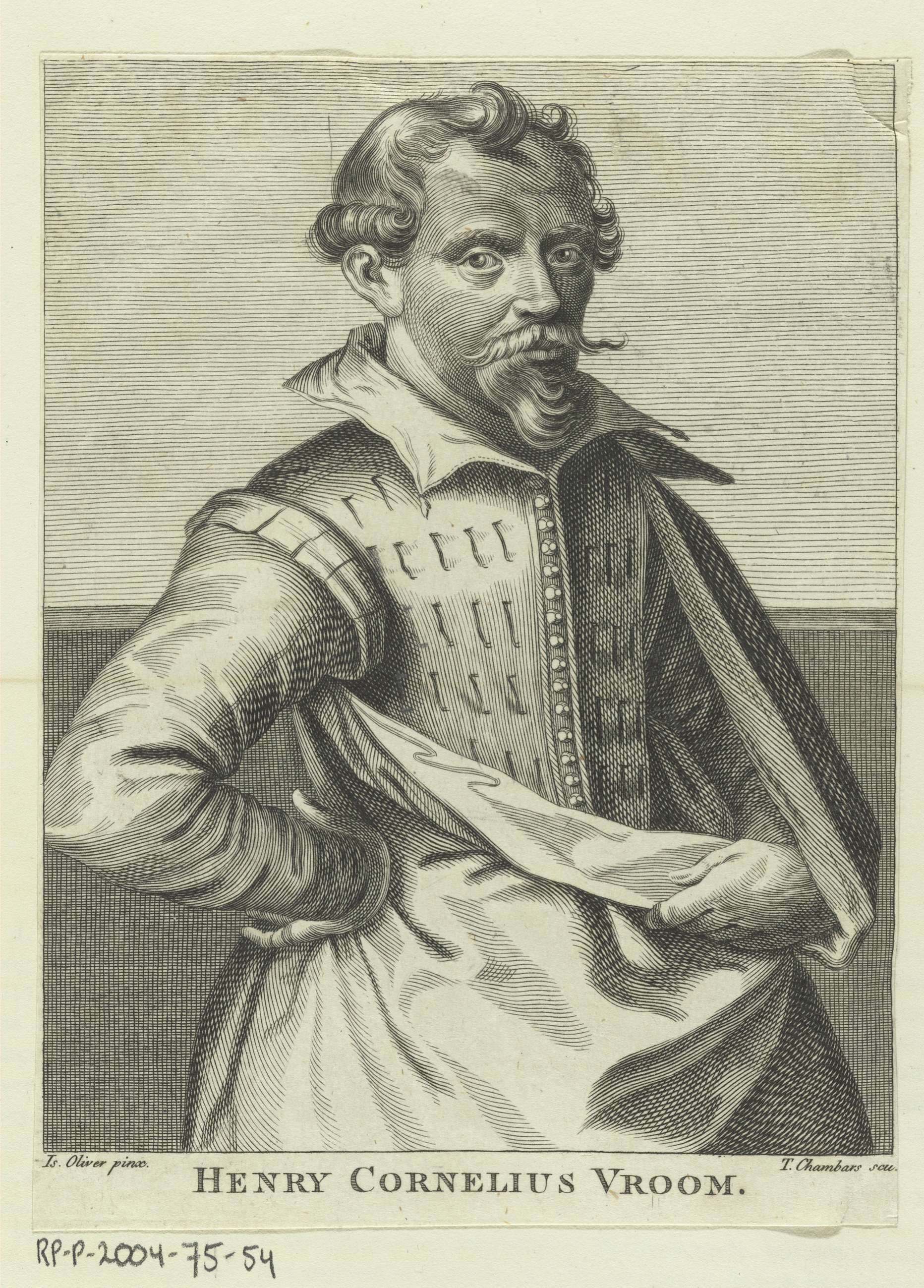
Hendrik Cornelisz Vroom was a Dutch Golden Age painter credited with being the founder of Dutch marine art or seascape painting. Beginning with the "birds-eye" viewpoint of earlier Netherlandish marine art, his later works show a view from lower down, and more realistic depiction of the seas themselves. He is not to be confused with his son and pupil Cornelis Vroom.

Dutch Golden Age painting is the painting of the Dutch Golden Age, a period in Dutch history roughly spanning the 17th century, during and after the later part of the Eighty Years' War (1568–1648) for Dutch independence.

Jan Hendrik Weissenbruch, also known as Hendrik Johannes Weissenbruch was a Dutch painter of the Hague School. He is noted especially for his watercolours.

Marine art or maritime art is a form of figurative art that portrays or draws its main inspiration from the sea. Maritime painting is a genre that depicts ships and the sea—a genre particularly strong from the 17th to 19th centuries. In practice the term often covers art showing shipping on rivers and estuaries, beach scenes and all art showing boats, without any rigid distinction - for practical reasons subjects that can be drawn or painted from dry land in fact feature strongly in the genre. Strictly speaking "maritime art" should always include some element of human seafaring, whereas "marine art" would also include pure seascapes with no human element, though this distinction may not be observed in practice.
Jan Porcellis was a Dutch marine artist in the seventeenth century. His works initiated a "decisive transition from early realism to the tonal phase", fostering a new style and subject in marine painting by focusing on overcast skies and rough waters, a radical break from maritime art's previous focus on the grandeur of ships in historical settings. This style of greater simplicity surrounding maritime art, with the majority of the canvas displaying sea and sky, set the grounds for later works in this genre.

Hendrick Dubbels or Hendrick Jacobsz. Dubbels and variants (1621–1707) was a Dutch Golden Age painter of marine subjects and winter landscapes, who spent much of his career working in the studios of other marine artists.
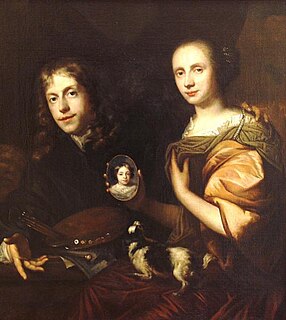
Jan de Baen was a Dutch portrait painter who lived during the Dutch Golden Age. He was a pupil of the painter Jacob Adriaensz Backer in Amsterdam from 1645 to 1648. He worked for Charles II of England in his Dutch exile, and from 1660 until his death he lived and worked in The Hague. His portraits were popular in his day, and he painted the most distinguished people of his time.
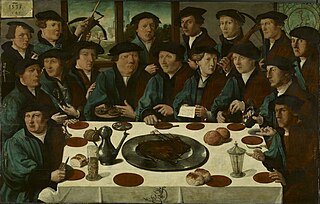
Cornelis Anthonisz., Anthonisz. also spelled Anthonissen or Teunissen, was a Dutch painter, engraver, and mapmaker.
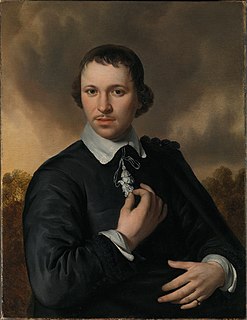
Jan van de Cappelle was a Dutch Golden Age painter of seascapes and winter landscapes, also notable as an industrialist and art collector. He is "now considered the outstanding marine painter of 17th century Holland". He lived all his life in Amsterdam, and as well as working as an artist spent much, or most, of his time helping to manage his father Franchoy's large dyeworks, which specialized in the expensive dye carmine, and which he eventually inherited in 1674. Presumably because of this dual career, there are fewer than 150 surviving paintings, a relatively small number for the industrious painters of the Dutch Golden Age. His marine paintings usually show estuary or river scenes rather than the open sea, and the water is always very calm, allowing it to act as a mirror reflecting the cloud formations above; this effect was Cappelle's speciality.

Andries van Eertvelt, was a Flemish painter, draughtsman and engraver who was one of the first Flemish artists to specialize in marine art. Several of his pupils also became prominent marine artists.

Aert Anthoniszoon or Anthonissen, also known as Aart or Aert van Antum was a Dutch marine painter.

Frans Badens was a Flemish-born painter who was active in Amsterdam where he was known for his mythological and religious scenes and portraits. In his lifetime he was regarded as one of the most important painters who had moved to Amsterdam and was admired for his realistic treatment of the skin.
Arnoldus van Anthonissen, was a Dutch Golden Age marine painter.
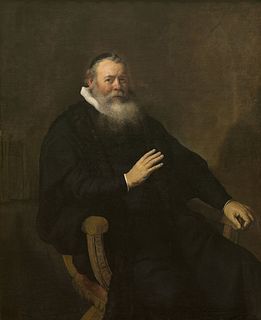
The Preacher Eleazar Swalmius is a 1637 oil on canvas painting by the Dutch artist Rembrandt. It is currently owned by the Royal Museum of Fine Arts in Antwerp. The painting has been certified a real Rembrandt. The painting was listed in 1727 in the catalog of the Duke of Orléans collection, as a portrait of an Amsterdam mayor by Rembrandt. It remained in the noble family's possession until 1792, when Duke Louis-Philippe-Joseph sold the entire collection to finance his political career and pay off debts. The painting passed through several English collections into the hands of the Bourgeois brothers, art dealers from Cologne, who sold the painting as an original Rembrandt to the museum in 1886. The painting was stored away for a long time due to doubts cast over its authenticity.
Attribution: